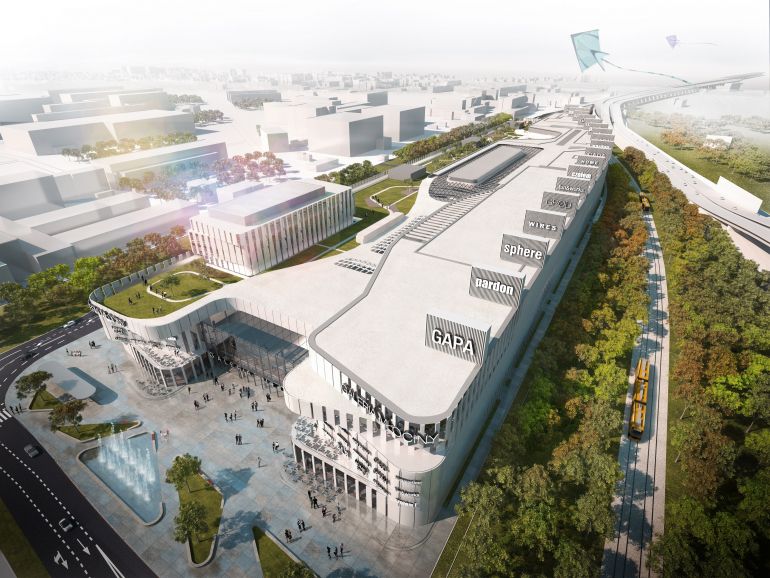WBJ: Is retail still an attractive asset class, compared to the other commercial asset classes?
Paul Kusmierz: Well, if you look at the past seven-ten years, retail has outperformed offices and logistics in Poland and CEE in the long run. Retail chains are still looking to expand and retail sales seem to be increasing. In Warsaw, the demand from tenants is huge and their willingness to pay the relatively high rents is very visible. In regional cities we have also been seeing improved sales and footfall in our malls. If you take the rising wealth in Poland into consideration, retail still makes sense, but of course it has to be in the right location. In some of the large cities, including in Poznań, there is probably already too much retail space. However, in many secondary cities across Poland there is still room for more retail space, especially in retail parks that support the major existing shopping centers.
How can you gain an edge in a market that has been defined by growing competition?
I think it comes back to location. If you have the right location and you want to have a competitive scheme, you have to be dominant. When you enter a secondary or a tertiary city, you have to be the largest and most dominant in that particular location. This may mean different things in various locations, but generally speaking a dominant shopping center usually features a cinema, a hypermarket and some of the major international fashion brands. The center also needs to be accessible, both by car and by public transport.
How have shopping centers in Poland changed in recent years?
Many of the existing shopping centers have been enlarged. Developers have been adding new stores, but also some of the main tenants have increased the amount of space they occupy in malls. So there has been take-up from current tenants, and we have also seen new brands enter Poland and those that are already present in Poland have expanded across the country. Shopping centers are now also increasingly becoming lifestyle centers – if you look at food courts, for example, they have expanded to accommodate more restaurants and offer much more choice.
Is it large or small cities that offer the most room for expansion at the moment?
There are still many opportunities in Warsaw – approximately 15 major retail projects are currently being planned in the city. When it comes to smaller cities, there is still some room for development in cities with populations of between 50,000 and 100,000, but this gap is now closing fast. Where we have been seeing a lot of growth is secondary retail in secondary cities – retail parks with a few thousand sqm of leasable space, located adjacent to dominant shopping centers. We will continue to see a lot of development activity in this segment of the market in the coming years.
What is driving the huge demand for retail space in Warsaw?
It is a combination of two major factors. On the one hand, when you look at the purchasing power and the existing supply of retail space in Warsaw, the market is still much less saturated than the markets in some of the largest regional cities, including in Poznań and Wrocław. On the other hand, Warsaw keeps attracting new inhabitants, new residential developments are springing up across the city and it continues to grow. We talk to a lot of retailers and when we ask them where they would like to be, Warsaw is usually their first choice.
The Galeria Młociny project that you are developing in the Bielany district will be located relatively close to another scheme now under construction in northern Warsaw. Aren’t you afraid of competition from the other mall?
I think that the Vistula is a natural division and if you look at the catchment area on our side of the river, there are enough residential areas there to support our mall. Thousands of new apartments are now under construction in this part of Warsaw and even more are in the pipeline. This means tens of thousands of new inhabitants in the long term. We believe that the huge industrial area located north of our project will sooner or later be zoned for residential use and redeveloped. There is also enough differentiation between the two shopping centers. We aim to have the best fashion offering in Warsaw, but there will also be a major lifestyle component in the shopping center. Significantly, our mall will be located next to one of the largest transportation hubs in Warsaw so it will be well connected with the other parts of the city.
What is the current leasing level in the mall?
We have already leased more than 40,000 sqm, or approximately 55-60 percent of the total amount of the space available in Galeria Młociny, which is far beyond our previous projections for this stage of the development and leasing process. We want to secure international brands that are not yet present in Poland. We recently signed a letter of intent with one such potential tenant, but I do not want to reveal any further details until the actual lease agreement with that brand has been signed.
Are you planning any other shopping centers in or outside Warsaw at the moment?
We are planning a 27,000-sqm shopping center in the Legionowo suburb of Warsaw, which will be accompanied by a 4,000-sqm retail park. We have already acquired the site and we are now waiting for the final building permit. We want to launch construction work on the project later this year.


